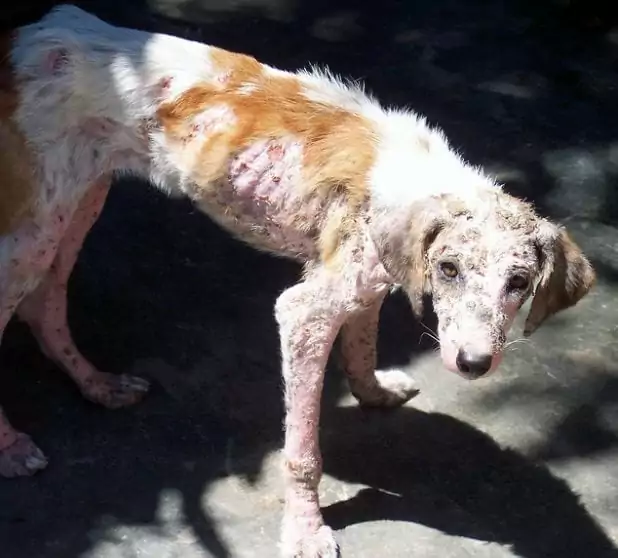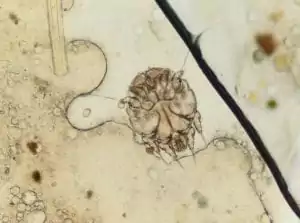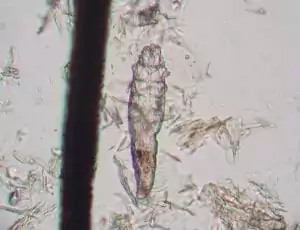In rare cases mange in dogs can be fatal if left untreated. Mange is caused by three species of parasites. Sarcoptes scabiei causing sarcoptic mange, Demodex canis being the most infamous is responsible for demodectic mange and the least threatening is Cheyletiella.
All of the above-mentioned parasites cause skin problems with different degrees of severity of symptoms and signs. Most of the times it’s difficult to distinguish which parasite caused the problems just by observing the dog. Differential diagnosis includes bacterial infections and pyoderma, fungal infections, malnutrition, hormonal diseases, allergies etc.
Sarcoptic mange in dogs
Sarcoptic mange is transmittable between dogs and can be transferred onto humans. In humans, the parasitic infections last few days, cause local rash and erythema and spontaneously disappear even without treatment.
When a healthy dog comes in contact with an infected one, the first symptoms appear in a few days. The dog becomes very itchy, feels uncomfortable and patches of hair loss appear on the margins of the ears, the neck, thighs, legs etc. The affected skin can be red and inflamed, crusty or purulent. The itching causes skin defects and secondary bacterial and fungal infections develop.
Diagnosing sarcoptic mange in dogs
For accurate diagnostics, the vet needs to perform superficial skin scraping of affected areas on the skin and evaluate the specimen microscopically. Parasites and parasitic eggs should be visible under the microscope, but if there aren’t and it doesn’t mean there is no parasitic infestation.
Treatment of sarcoptic mange in dogs
Depending on the severity of the disease, there are few treatment options to choose between. In the least severe cases the veterinarian will probably recommend topical treatment and antiparasitic shampoos. The treatments are usually repeated daily or weekly. More serious cases require systematic treatment with antiparasitic drugs and antibiotics for secondary infections.
Demodectic mange mange in dogs
This parasite is part of the normal skin flora and is usually harmless. It’s transferred from the mother to pups a few days after birth and residence in the hair follicles causing no problem. The strong immune system keeps the number of Demodex mites in check, but in dogs with weakened immunity, they grow out of control. This type of mange isn’t contagious to humans.
The juvenile form of Demodex is a particularly serious form in puppies with inherited weak immunity. Healthy young dogs can develop a local form with some skin patches that usually resolve on their own or with topical treatment only. Elderly dogs, neglected dogs or dogs with some other disease impairing the immune system (cancer, diabetes, Cushing) also develop demodectic mange.
Dogs with generalized form lose almost all hair and the skin becomes swelled and crusted. The itching is minimal or absent.
Diagnosing and treatment of demodectic mange in dogs
To diagnose the disease the veterinarian will perform deep scraping test and evaluate the specimen microscopically. The treatment is similar to the one in sarcoptic mange. It takes a lot of time (approximately a month) for the skin to get back to normal function and for the new coat to regrow. Patience and following treatment regimens will result in complete resolutions of the problem.
If you would like to learn more about mange parasites, read “Mange in cats” on our blog.




